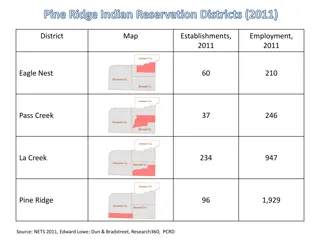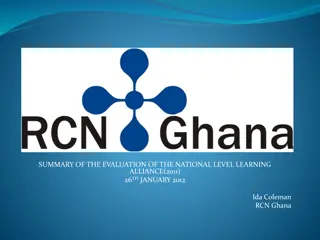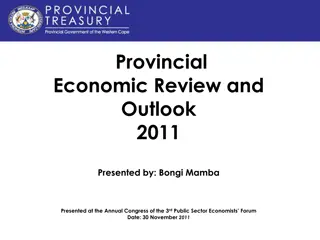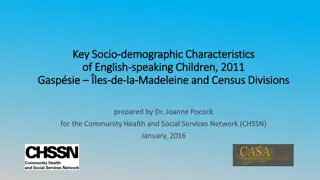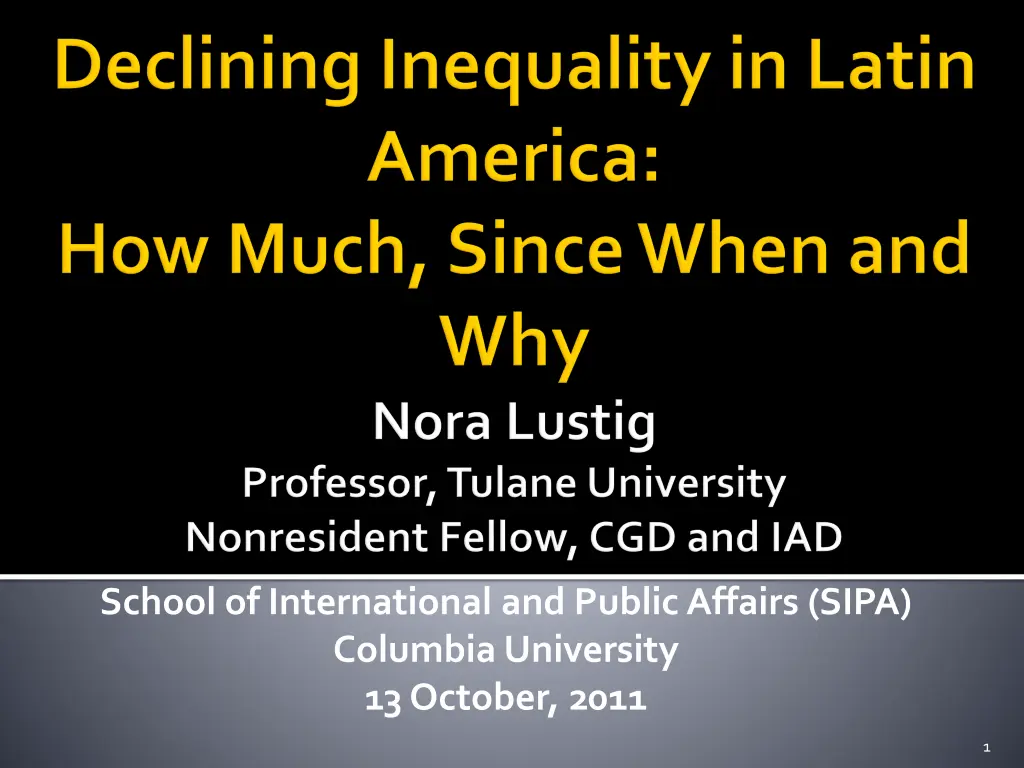
Declining Inequality in Latin America: Trends and Progress
Explore the trends and progress of declining inequality in Latin America, showcasing statistical significance and continued decline during global crises. Insights on income distribution, policy impacts, and regional comparisons are discussed in the context of various UNDP-sponsored projects and academic research.
Download Presentation

Please find below an Image/Link to download the presentation.
The content on the website is provided AS IS for your information and personal use only. It may not be sold, licensed, or shared on other websites without obtaining consent from the author. If you encounter any issues during the download, it is possible that the publisher has removed the file from their server.
You are allowed to download the files provided on this website for personal or commercial use, subject to the condition that they are used lawfully. All files are the property of their respective owners.
The content on the website is provided AS IS for your information and personal use only. It may not be sold, licensed, or shared on other websites without obtaining consent from the author.
E N D
Presentation Transcript
School of International and Public Affairs (SIPA) Columbia University 13 October, 2011 1
UNDP-Sponsored Project (coordinated with Luis F. Lopez-Calva) Declining Inequality in Latin America: A Decade of Progress? Edited by Luis F. L pez-Calva and Nora Lustig, Brookings Institution and UNDP, 2010 Declining Inequality in Latin America: Some Economics, Some Politics, Birdsall, Lustig and McLeod in Handbook of Latin American Politics, forthcoming Declining Inequality in Latin America: How Much, Since When and Why?, Lustig, Lopez-Calva and Ortiz, working paper, Tulane University. Poverty and Inequality under Latin America s New Left Regimes, McLeod, Darryl and Nora Lustig (2010). Paper prepared for the 15th Annual LACEA Meeting, Medellin, Colombia: Universidad de Antioquia and Universidad Eafit. Under revision, 2011 Cambios en la desigualdad del ingreso en Am rica Latina. Contribuci n de sus principales determinantes: 1995 2006 (2009) Alejo et al., PNUD 2
Declining Inequality in LA: How Much? Since When? Declining Inequality: Why? Argentina, Brazil, Mexico and Peru Falling skill premia More progressive government transfers Caveat: Under-reporting of Top Incomes and Inequality Trends The Future: Will Inequality Continue to Decline? 4
60.0 55.0 53.2 50.0 44.7 45.0 Gini coefficient 39.1 38.9 38.9 40.0 33.6 35.0 32.2 30.0 25.0 20.0 High Income Europe and Central Asia South Asia North Africa and the Middle East East Asia and the Pacific Sub-Saharan Africa Latin America and the Caribbean 5
Inequality in most Latin American countries (13 out of 17) has declined (roughly 1% a year) between (circa) 2000 and (circa) 2008 Decline is statistically significant Decline continued through the global financial crisis in 2009 Inequality declined in LA while it rose in other regions 8
Trends in Inequality Gini Coefficient Early 1990 s-Late 2000 s Light Grey: Countries with Falling Ineq (Lustig et al., 2011) 0.550 0.540 0.540 0.537 0.530 0.530 0.524 0.523 0.520 0.520 0.518 0.509 0.510 0.503 0.502 0.500 0.490 0.480 Early 90s (12 countries) Mid-90s (15 countries) Late 90s (16 countries) Mid-2000s (17 countries) Late 2000s (17 countries) 9
Change in GiniCoefficient by Country: circa 2000-2008 (yearly change in percent) 10
Change in GiniCoefficient by Country: circa 2000-2009 (yearly change in percent) 11
Change of Gini in percentage points Average of increase Average of decrease 10.0 8.2 8.0 6.0 5.0 4.1 4.0 2.7 2.6 2.5 2.1 2.7 1.5 2.0 0.8 0.1 0.1 0.0 -2.0 -2.9 -4.0 -3.1 -3.5 -4.1 -5.0 -4.2 -4.4 -6.0 -5.4 -6.0 -6.2 -8.0 -7.4 -8.4 -10.0 1992-2002 2002-2009 1997-2003 2003-2009 1997-2003 2003-2009 1995-2001 2001-2008 1985-1998 1998-2009 1989-2001 2001-2009 1989-1996 1996-2008 1989-2002 2002-2006 1992-1998 1998-2009 2000-2003 2003-2009 1997-2002 2002-2007 Argentina Peru Paraguay El Salvador Brazil Panama Mexico Venezuela Chile Dominican Rep. Bolivia 12
In three countries, during second half of 1990s: Mexico, Brazil and Chile In six, started in 2002-2003: Argentina, Bolivia, El Salvador, Paraguay, Panama and Peru In others, although there are fluctuations, inequality between 2000 and 2009 increased: Costa Rica, Honduras and Uruguay 13
Gini 1996=100 (Lustig et al, 2011) Brasil Chile M xico 102 100 98 96 94 92 90 88 86 84 1996 1997 1998 1999 2000 2001 2002 2003 2004 2005 2006 2007 2008 2009 14
Gini 1999=100 (Lustig et al, 2011) Argentina El Salvador Panam Per Bolivia Paraguay 110 105 100 95 90 85 80 1999 2000 2001 2002 2003 2004 2005 2006 2007 2008 2009 15
Rising Inequality 2000-2009 Costa Rica Honduras Uruguay 110 105 100 95 90 85 2000 2001 2002 2003 2004 2005 2006 2007 2008 2009 16
2004 Dominican Republic, Ecuador, Paraguay, Peru 2003 Argentina, Bolivia, Venezuela 2002 Year when inequality started to decline 2001 El Salvador, Panama 2000 1999 1998 Brazil, Chile 1997 1996 Mexico 1995 1994 17
The decline took place in: Persistently high inequality countries (Brazil) and normally low inequality countries (Argentina) Fast growing countries (Chile and Peru), slow growing countries (Brazil and Mexico) and countries recovering from crisis (Argentina and Venezuela) Countries with left populist governments (Argentina), left social-democratic governments (e.g., Brazil, Chile) and center/center-right governments (e.g., Mexico and Peru) 18
Gini (Circa 2000) Uruguay 44.0 Venezuela 44.1 Costa Rica 49.9 Nicaragua 50.2 Argentina 50.4 El Salvador 51.9 Dominican Rep. 51.9 Mexico 53.8 Peru 54.0 Guatemala 54.2 Ecuador 54.5 Chile 55.2 Honduras 55.5 Panama 56.5 Paraguay 56.6 Bolivia 58.5 Brazil 58.8 Total 52.9 40.0 42.0 44.0 46.0 48.0 Gini Coefficient in Percent 50.0 52.0 54.0 56.0 58.0 60.0 19
1.0 0.79 0.5 0.12 0.0 -0.39 -0.5 -0.53 -0.66 -0.77 -0.78 -1.0 -0.97 -1.07 -1.07 -1.23 -1.29 -1.5 Non-left Venezuela El Salvador Honduras Uruguay Peru Left-wing Mexico Chile Panama Brasil Argentina 20
Figure 24: Redistributive impact of changes in social spending Figure 8: Redistributive impact of changes in social spending budget share by quintile (change significant at *5% or **1% level) budget share by quintile (change significant at *5% or **1% level) 0.83** 0.81** 0.6** 0.49* 0.44* .31* 0.33** 0.29* 0.26 0.21 0.16 0.08 Social Democratic -1.2* Left Populist -1.5 Non-left -2.6** 1st Quintile 2nd Quintile Source: Appendix A, Table A-3 and McLeod and Lustig (2011). 3rd Quintile 4th Q 5th Quintile Source: McLeod and Lustig (2011). 21
In-depth analysis in four countries: Argentina (Gasparini and Cruces) (urban; 2/3 of pop) Brazil (Barros, Carvalho, Mendoca & Franco) Mexico (Esquivel, Lustig and Scott) Peru (Jaramillo & Saavedra) Source: Lopez-Calva and Lustig (2010) 22
Decline in inequality is statistically significant and significant in terms of order of magnitude There is Lorenz dominance (unambiguous decline independently of choice of inequality measure) Robust to income concept (e.g., monetary vs. total) 24
Representative sample of Latin American diversity: high/medium/low ineq high/low growth Populist/social democratic/center- center-right governments 25
Sample Representative of High and Low Inequality Countries (Latin America: Gini Coefficient by Country; circa 2007; in percent) 65 59.3 60 57.2 54.8 54.9 54.3 54.4 55 Gini coefficient 53.2 52.3 51.8 51.6 49.7 49.7 49.9 50 48.9 48.2 48.3 46.8 45 43.5 40 TOTAL COUNTRIES Honduras Ecuador Chile Uruguay Bolivia Costa Rica Peru El Salvador Brazil Argentina Mexico Dominican Rep. Panama Nicaragua Paraguay Guatemala Venezuela 26
Argentina and Peru were growing at around 6 percent a year since 2003 Brazil and Mexico were growing at less than 3 percent a year (Brazil s growth rate picked up only from 2008 onwards)
Income of the Brazilian poor has been growing as fast as per capita GDP in China while income of the richest ten percent has been growing like Germany s per capita GDP Distribution of countries according to the average per capita GDP growth rate between 1990 and 2005 15 13 Average annual growth rate (%) 11 China 9 Brazilian bottom 10% 7 5 3 Germany 1 Brazilian top 10% -1 -3 Haiti -5 0 5 10 15 20 25 30 35 40 45 50 55 60 65 70 75 80 85 90 95 100 Distribution of countries (%)
Household per capita income for each decile Average of income per capita growth rates 4.5 4.1 4.0 3.8 3.5 3.3 3.1 Rate of annual growth (in %) 3.0 2.8 2.6 2.7 2.5 2.3 2.2 2.0 1.8 1.5 1.0 0.6 0.5 0.0 1 2 3 4 5 6 7 8 9 10 Decil 29
Household per capita income for each decile Average of income per capita growth rates 12.0 10.0 9.6 Rate of annual growth (in %) 7.8 8.0 7.3 7.1 7.0 6.8 6.5 6.6 6.0 6.0 5.1 4.0 2.6 2.0 0.0 1 2 3 4 5 6 7 8 9 10 Decil 30
There are many different factors that affect the distribution of income over time: the evolution of the distribution of income is the result of many different effects some of them quite large which may offset one another in whole or in part. (Bourguignon et al., 2005) Useful framework: to consider the proximate factors that affect the distribution of income at the individual and household level: Distribution of assets and personal characteristics Return to assets and characteristics Utilization of assets and characteristics Transfers (private and public) Socio-demographic factors 1. 2. 3. 4. 5. 31
Proportion of working adults as a share of the total number of adults (and total household members) rose; partly linked to the sharp increase in female labor force participation:1990-2006 by 18.1 p.pts in Mexico, 14.2 in Argentina, 12.0 in Brazil and 5.8 in Peru. Dependency ratios improved proportionately more for low incomes. Working adults (except for Peru) became more equally distributed (female adults participated proportionately more for low incomes) Average years of schooling rose faster for the bottom quintile than for the top quintile. => Distribution of education (human capital) became more equal in all four countries 32
Household per capita income and its determinants Per capita household income DEMOGRAPHIC Proportion of adults in the household FERTILITY Household income per adult DEMOGRAPHIC MARKET POLITICS/INST./ SOC. NORMS STATE (EDUCATION) MARKET POLITICS/ INST. STATE Household labor income per adult Household non-labor income per adult RENTS & PROFITS REMITTANCES GOV. TRANSFFERS Proportion of working adults PARTICIPATION IN LABOR FORCE EMPLOYMENT OPPORT Labor income per working adult in the household WAGES BY SKILL/OTHER HOURS WORKED DEMOGRAPHIC MARKET 34
Demographics: Changes in the ratio of adults per household were equalizing, albeit the orders of magnitude were generally smaller except for Peru. Labor force participation: With the exception of Peru, changes in labor force participation (the proportion of working adults) were equalizing. This effect was stronger in Argentina. 35
Labor income (Earnings): In Argentina, Brazil, and Mexico between 44% and 65% of the decline in overall inequality is due to a reduction in earnings per working adult inequality. In Peru, however, changes in earnings inequality were unequalizing at the household level but not so at the individual workers level. Non-labor income: Changes in the distribution of non-labor income were equalizing; the contribution of this factor was quite high in Brazil and Peru (45% and 90%, respectively). 36
=> Decline in labor inc0me (except for Peru at the household level) and non-labor income inequality important determinants of the decline in overall income inequality (in per capita household income) 37
Decline in labor income inequality: employment generated by recovery: open unemployment fell from 14.8% in 2000 to 9.6% in 2006 shift in favor of more low-skilled, labor-intensive sectors as a result of the devaluation rise in the influence of labor unions which compresses wages fading of the one-time effect of skill-biased technical change that occurred in the 1990s Decline in non-labor income inequality: more progressive government transfers: Jefesy Jefas de Hogar program launched in 2002 38
Argentina: Returns to education Ratio predicted wages 4.0 3.5 3.0 2.5 2.0 1.5 1.0 1980 1986 1992 1998 2006 Secondary/primary College/primary 39
Decline in labor income inequality: About 50% accounted for by decline in attainment inequality (quantity effect) and less steep returns -- wage gap by skill narrows (price effect). Latter dominant. (See Gini for years of schooling and returns by skill in next two slides) About 25% accounted for by decline in spatial segmentation; especially, reduction in wage differentials between metropolitan areas and medium/small municipalities. Also, decline in sectoral segmentation. 41
Figure 7.2: Evolution of the wage differential among metropolitan regions and different sized municipalities: 1995-2006 35 32,0 30 30,2 29,5 28,0 Differential between metropolitan regions and small country municipalities 26,0 25 25,7 23,0 Differential between medium and small country municipalities 20 Differential (%) 20,7 18,4 19,3 15,4 17,1 14,5 14,5 15 13,6 13,1 13,2 13,3 11,8 11,4 10,7 12,9 10,4 10,7 10 11,0 10,1 9,4 9,3 Differential between metropolitan regions and medium country municipalities 6,1 6,2 6,4 5 5,6 4,5 0 1995 1996 1997 1998 1999 2000 2001 2002 2003 2004 2005 2006 Years 44
Contribution of changes in the distribution of income from assets (rents, interest and dividends) and private transfers was unequalizing but limited. Most of the impact of non-labor income on the reduction of overall income inequality was due to changes in the distribution of public transfers: changes in size, coverage and distribution of public transfers. Bolsa Familia accounts for close to 10 percent of the decline in household per capita income inequality. 45
Decline in labor income inequality: Educational attainment became more equal and returns less steep. The latter seems to be associated with the decline in relative supply of workers with low educational levels. Between 1989 and 2006, the share of workers with less than lower-secondary education fell from 55% to around 33%. It coincides with the period in which government gave a big push to basic education. Between 1992 and 2002 spending per student in tertiary education expanded in real terms by 7.5 percent while it rose by 63 percent for primary education. The relative ratio of spending per student in tertiary vs. primary education thus declined from a historical maximum of 12 in 1983-1988, to less than 6 in 1994- 2000 (by comparison, the average ratio for high-income OECD countries is close to 2). Next two slides show: Gini for yrs. of schooling and returns to schooling 46
The equalizing contribution of government transfers increased over time (both at the national level as well as for urban and, especially, rural households). By 2006 transfers became the income source with the largest equalizing effect of all the income sources considered. Remittances became more equalizing too but with a smaller effect than government transfers. Both more than offset the increasingly unequalizing impact of pensions. 49
The sharp rise in the role and equalizing impact of public transfers was a consequence of a significant policy shift in 1997, when the government launched the conditional cash transfer program Progresa/Oportunidades. During 1996-2006 the size of public transfers increased; they became more equally distributed among recipients, and the recipients of transfers increasingly belonged to relatively poorer segments of the population. 50



